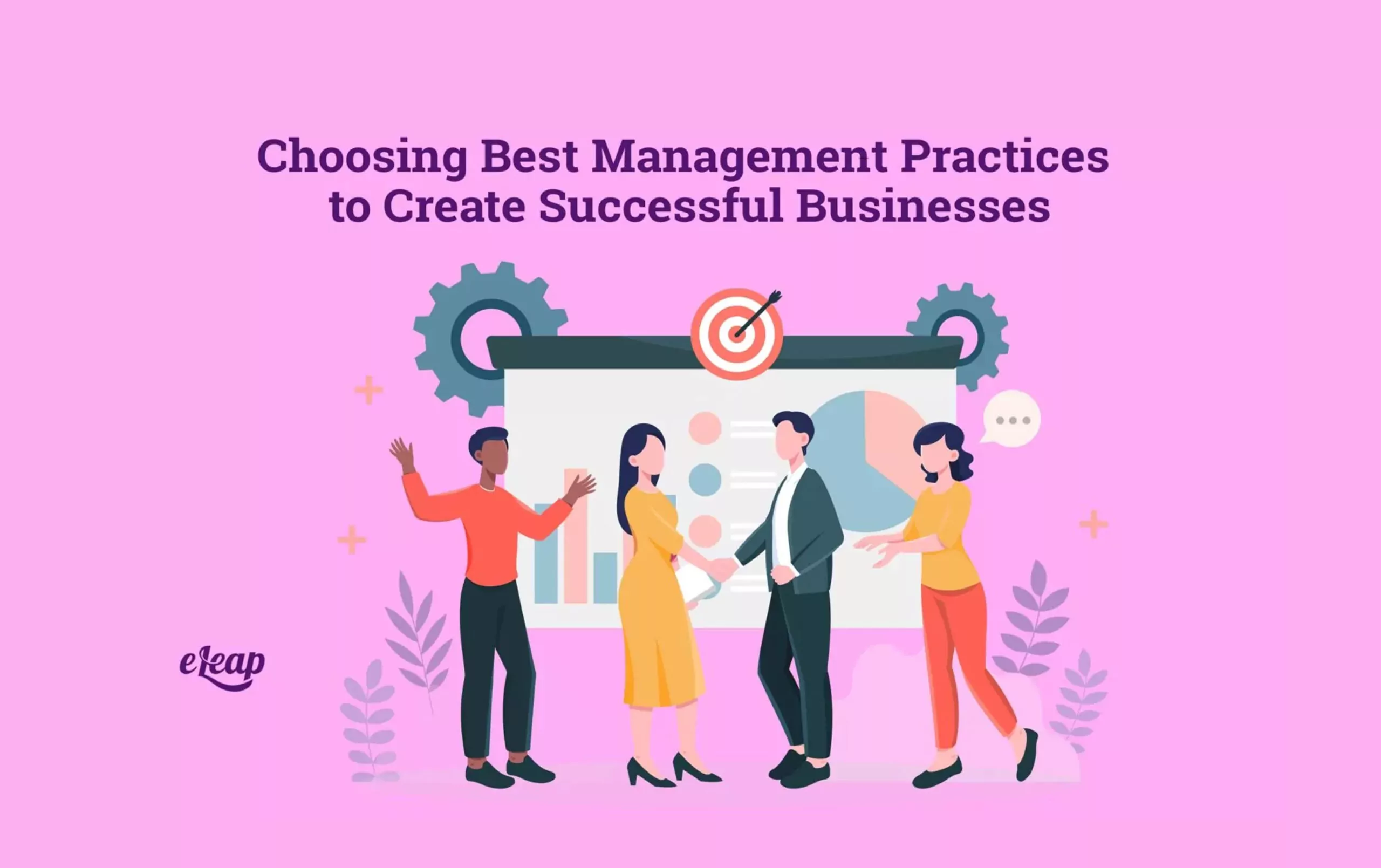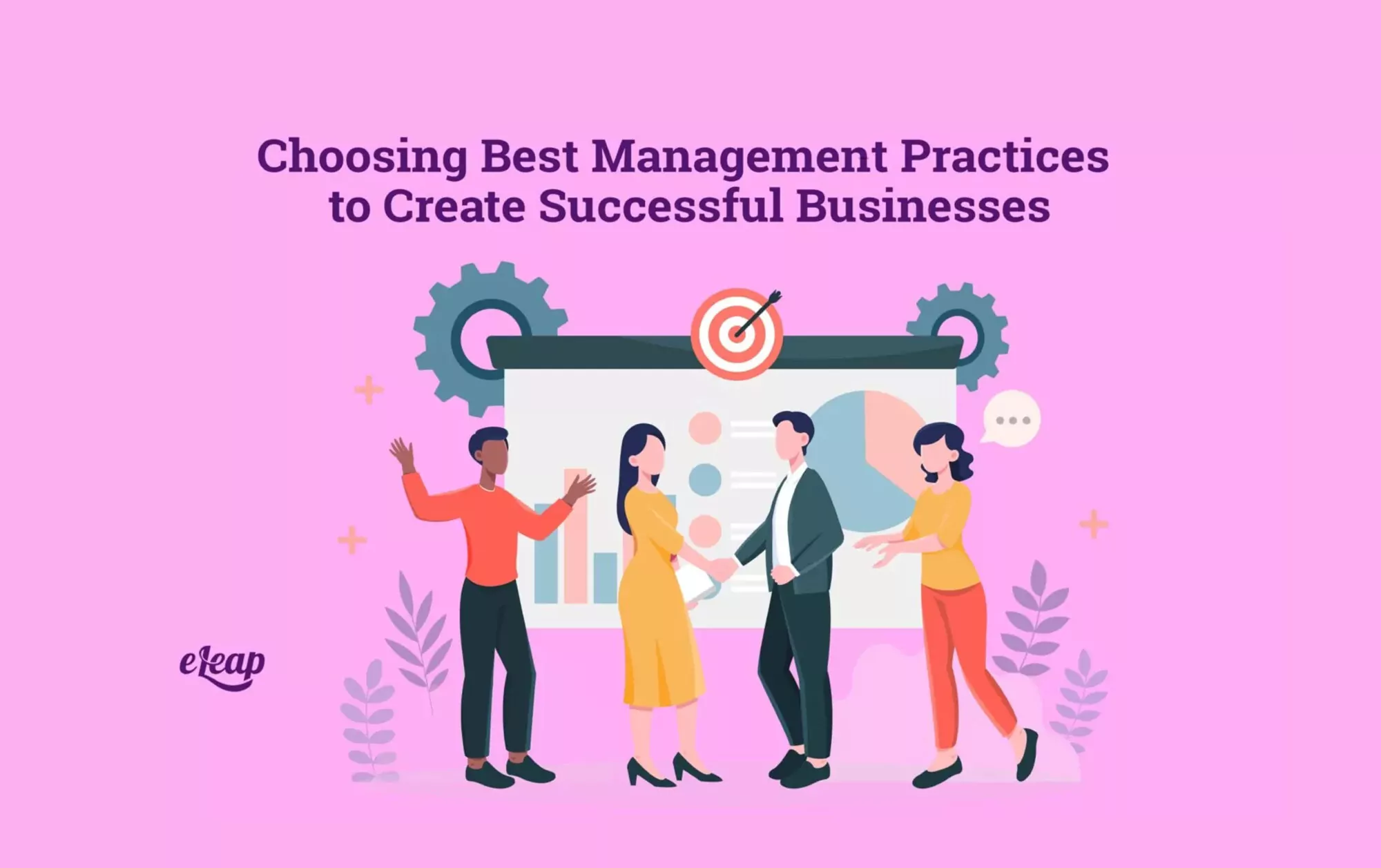Choosing Best Management Practices to Create Successful Businesses

Very successful businesses choose their best management practices carefully. In business, just because something has been done a certain way for decades doesn’t necessarily mean that it’s good. Sometimes, it’s beneficial to go in a new direction to stay competitive. Effective best management practices range from leadership strategies and communication to company culture.
Important Distinctions in Successful Best Management Practices
The first important distinction to make is between being and doing. Every person and every group has a being and doing state. The big difference is that being states are largely invisible and take place internally. Doing states are visible and external.
Examples of individual being include:
- Thoughts and emotions
- Beliefs and values
- Strengths and weaknesses
- Mindset
- Purpose
- Commitment
In relation to a group, being includes:
- Company culture
- Shared beliefs and values
- Synergy
- Trust
- Narratives
On the other hand, the individual doing state is comprised of things such as:
- Habits
- Behaviors
- Appearance
- Speaking and writing
- Creating and building
Group doing includes:
- Coordination and collaboration
- Interactions and communication
- Physical spaces
- Company results, products, and services
Almost any business leader today agrees that company culture is one of the most important aspects of an organization. However, this is a fairly new idea. Organizational culture isn’t seen or tangible, even though it can be sensed quite easily, just like thoughts and feelings.
Thoughts and feelings guide what we do, and company culture is a big determiner of how employees act and respond to their job and each other. The being states drive the doing states.
Since doing is caused by being, then the invisible and internal being aspects need to be given plenty of attention. Essentially, if being is taken care of, the doing part takes care of itself. Furthermore, if being is ignored and oppressed, no amount of rewards or incentives are going to raise people’s morale.
The next distinction is between work and life. Many people believe that you can have a work life and a personal life. This is understandable, especially as we often talk about creating a work-life balance.
However, in reality, work is just one component of our bigger life. It’s not work and then everything else. Our jobs affect our relationships, families, finances, time away—and vice versa.
This means that as a manager, you need to concern yourself with your employees’ outside lives. If they are struggling at work, it affects the rest of their lives. If they are struggling in other areas, their work is hindered, too.
You aren’t responsible for people’s choices or for solving their problems. That being said, it is incredibly powerful to give empathy and compassion to people during hard times. Make it a priority to model healthy boundaries and expect your employees to set them, as well.

Concrete Best Management Practices
Managers who use the following five concepts in their company culture show employees that they value them. Their employees have high morale and work hard because they respect themselves and the organization.
Growth Mindset
A growth mindset is the opposite of a fixed mindset. A fixed mindset tells you that your abilities, intelligence, and talents are what they are and you can’t change them. A growth mindset, on the other hand, tells you that you can learn, develop, and adapt.
The original research on growth vs. fixed mindset focused on children. However, it applies to all people, no matter the age.
People who tend toward a growth mindset are:
- Resilient
- Face challenges head-on
- Aren’t afraid to take risks
Those with fixed mindsets, on the other hand:
- Avoid challenges and stick with what’s safe
- Protect themselves with defense mechanisms
- Think more about what’s going to make them look good instead of grow
- Are less resilient
- Are less likely to thrive
In the workplace, it’s important to assess whether your team is comprised of mostly people with growth or fixed mindsets. Overloading “fixed” people with growth ideas is often counterproductive. Instead, make a growth mindset a part of the being state of your company culture. Eventually, people’s self-concepts will evolve.
Using Strengths to Find Zone of Genius
It’s important to try and develop a growth mindset because we can all learn and improve. However, it’s also true that we all have unique skill sets and innate abilities.
For any “doing” task, people fall into one of four zones:
- Incompetence (most people are better at this than you)
- Competence (average skill, some people are better but some are worse)
- Excellence (highly skilled, you’re the cream of the crop)
- Genius (exceptional skill level, no one is better at this than you)
When we are in our Zone of Genius we give our greatest potential contribution. We work in such a flow zone that time zooms by and we leave feeling energized. We are passionate about what we do and that passion overflows.
Many people find things that they are excellent at which bring them recognition and high pay. However, without that passion to drive you into the Zone of Genius, the tasks become draining.
Thus, managers should help employees find their strengths and then align those with their passions and life’s purpose. People who have the opportunity to spend most of their time in their Zone of Genius perform and contribute at much higher levels.
Maslow’s Hierarchy of Needs and Psychological Safety
Abraham Maslow was a psychologist who showed that all humans have levels of basic needs. Our top level is called self-actualization, or the achievement of our full growth and potential.
Maslow stated that the levels of need are as follows:
- Physiology (food, water, bodily health)
- Safety (shelter, protection from danger)
- Belonging (sense of family, friends, connection)
- Esteem (how others see us, respect, value)
- Self-actualization (becoming our best selves)
Different parts of your brain respond to these levels of Maslow’s hierarchy. Your brain stem is where the survival instincts come from. When people don’t feel safe, their brains automatically try to protect themselves. In the workplace, this takes the form of gossip, toxicity, lies of omission, etc.
Employees who feel safe and accepted can use their executive functioning much more. They are creative, innovative, and take appropriate risks. They use their intuitions and focus on their passions. This creates a much more successful organization.
Intrinsic Motivation
People who are intrinsically motivated share four particular qualities. They have:
- Relatedness (genuine connection with others)
- Autonomy (freedom and flexibility to work according to our unique strengths)
- Mastery (continued improvement and learning)
- Purpose (knowledge that we are working for something greater than ourselves)
Intrinsic motivation in the workplace means that people are motivated to get up and go to work by more than just their paycheck. Many intrinsically motivated people even say that if they didn’t have to work, they still would because they love the positive feelings that their job provides.
You can’t change someone’s motivation. However, you can create a culture that:
- Values deep connections between employees
- Gives plenty of autonomy and respect around work
- Offers opportunities for learning
- Aligns company values and tasks with people’s purposes
Positive Psychology
Positive psychology came strongly onto the best management practices scene over the last few years. Instead of focusing on mental health struggles and illnesses as most areas of psychology do, this faction concentrates on well-being, morale, and happiness.
Studies show that people who concentrate on negativity see more negative happenings. People who choose joy and count their blessings see the world as a better place and their lives as more fulfilled.
Working in a positive state helps us access our highest levels of intelligence and creativity. We have more energy and are kinder to others. These ripple out to improve everything about a business.
Conclusion
These ideas are foundational for creating the best management practices in your organization. Show your employees that you value them and that you are interested in their lives. Make work a safe space in which people feel they are connected and can take appropriate risks.
Give people an environment that encourages intrinsic motivation. Make feedback a regular part of the company culture so that everyone is a part of open, honest conversations. Tackle problems early on so that they don’t fester and ruin the positive culture that you’ve worked so hard to create.
You have the power to create a company where people love coming to work. Everything you invest in developing these positive Best Management Practices pays off exponentially.